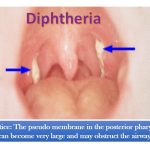Blog
Hand Sanitizer: Introduction, Composition, Preparation and Uses
 Introduction of Hand Sanitizer Hand sanitizer composition has alcohol that kills the microbes by two mechanisms i.e. protein denaturation and dissolving the lipid membrane. According to the WHO trusted Source, an alcohol-based hand sanitizer that meets the alcohol volume requirement can quickly reduce the number of microorganisms on your hands. It can also help destroy a wide range of disease-causing agents or pathogens on your hands, including the novel coronavirus which is now called COVID-19. Composition...
Introduction of Hand Sanitizer Hand sanitizer composition has alcohol that kills the microbes by two mechanisms i.e. protein denaturation and dissolving the lipid membrane. According to the WHO trusted Source, an alcohol-based hand sanitizer that meets the alcohol volume requirement can quickly reduce the number of microorganisms on your hands. It can also help destroy a wide range of disease-causing agents or pathogens on your hands, including the novel coronavirus which is now called COVID-19. Composition...
Diphtheria : Introduction, Pathogenesis, Lab Diagnosis and Treatment
 Introduction of Diphtheria From the Greek word, diphtheria (leather), diphtheria is named for the tough pseudomembrane that forms in the patient's throat. Caused by Aerobic Gram +ve bacilli, Corynebacterium diphtheriae. Exotoxin production only if infected by virus phage infected carrying tox gene Diphtheria is an acute, toxin-mediated disease caused by toxigenic Corynebacterium diphtheriae. It’s a very contagious and potentially life-threatening bacterial disease. An infection of local tissue of upper respiratory tract with the production of toxin which causes systemic effects on Heart and...
Introduction of Diphtheria From the Greek word, diphtheria (leather), diphtheria is named for the tough pseudomembrane that forms in the patient's throat. Caused by Aerobic Gram +ve bacilli, Corynebacterium diphtheriae. Exotoxin production only if infected by virus phage infected carrying tox gene Diphtheria is an acute, toxin-mediated disease caused by toxigenic Corynebacterium diphtheriae. It’s a very contagious and potentially life-threatening bacterial disease. An infection of local tissue of upper respiratory tract with the production of toxin which causes systemic effects on Heart and...
Giemsa Stain: Introduction, Preparation, Principle, Procedure and Result Interpretation
 Introduction of Giemsa stain Giemsa stain comes under a type of Romanowsky stain. The name of this stain has come from the surname of a German chemist Gustav Giemsa, who created a dye solution. It was initially designed for the detection of malarial parasites in blood smears, but it is also used in histology for routine examination of blood smears. This technique uses for the demonstration of other than malarial parasites, microorganisms like Helicobacter pylori, [embed]https://www.youtube.com/watch?v=0xMXqa6lp2w[/embed] Chlamydia...
Introduction of Giemsa stain Giemsa stain comes under a type of Romanowsky stain. The name of this stain has come from the surname of a German chemist Gustav Giemsa, who created a dye solution. It was initially designed for the detection of malarial parasites in blood smears, but it is also used in histology for routine examination of blood smears. This technique uses for the demonstration of other than malarial parasites, microorganisms like Helicobacter pylori, [embed]https://www.youtube.com/watch?v=0xMXqa6lp2w[/embed] Chlamydia...
